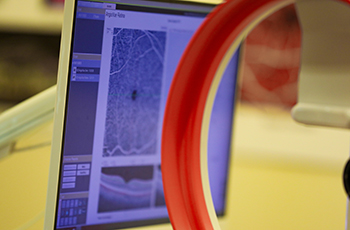As Oregon’s only biomedical engineering program, we work to find solutions to persistent challenges in medicine and health care. OHSU’s Department of Biomedical Engineering trains students to become innovators, entrepreneurs and scientific leaders.
Here’s why our Ph.D. program stands out:
- Seamless collaboration with researchers in the School of Medicine and with physicians in our hospital and clinics
- Dedicated focus on human health
- A culture that fosters innovation
- Opportunities to ask big questions and pursue answers alongside top researchers
- Competitive stipend and full funding for tuition and fees
- Average time to degree: 4.8 years
Join our program
Your research career starts here.
Learn more
Commitment to teamwork
Our mission is to enable discovery and innovation by creating dynamic teams reliant on the principles of respect and belonging.
Explore our research
Owen McCarty, Ph.D., chair of the Department of Biomedical Engineering, is featured in this OHSU Innovates video, describing the department's progress in bringing lab discoveries to patients.







